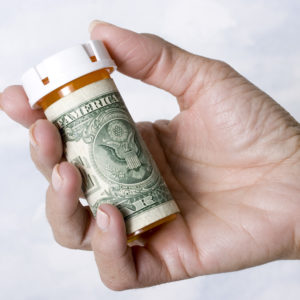Who says bipartisan solutions to high prescription drug prices are impossible?
Senators Maria Cantwell, D-Wash., and Chuck Grassley, R-Iowa, recently introduced legislation to rein in the biggest culprit behind high drug costs: pharmacy benefit managers. The bill prohibits some of PBMs’ most inflationary pricing practices and requires them to disclose others to the Federal Trade Commission. If it passes, patients will enjoy dramatic savings on their medications and access new, cheaper ones.
Little known to the general public, PBMs are oligopolistic middlemen between pharmaceutical manufacturers and insurance companies. They control the prescription drug supply chain and drive up drug costs by demanding massive kickbacks (known as “rebates”) from drugmakers in return for access to insurers’ preferred list of covered drugs (known as formularies).
For instance, if a manufacturer sells a drug for $100, but the PBM requires a $75 rebate to access the insurer formulary, the drug’s list price rises to $175. These extra costs are then passed on to patients. These rebates account for nearly 50 percent of list prices, artificially increasing drug prices by $200 billion annually.
Armed with PBMs’ secret pricing practices, the FTC can acquire the ammunition to repeal PBMs’ federal “safe harbor” from anti-kickback rules that apply in every other economic sector to protect competition and consumers.
The FTC seems to be gearing up for a long-overdue crackdown on PBMs. Last month marked the agency’s deadline for public comments regarding PBMs’ inflationary practices. The FTC also recently confirmed its fifth commissioner, who can provide the tiebreaking vote needed to break a 2-2 deadlock within the agency regarding whether to address PBM malpractice.
To understand why PBMs are the main reason for increasing drug prices, consider that net drug prices (sticker prices minus rebates) have fallen over the past several years. In other words, rebates account for the entire increase in medication costs.
The divergence between list prices and net prices absent rebates is especially apparent with insulin, whose increasing costs have attracted significant political attention. According to a recent JAMA study, insulin list prices rose by 40 percent since 2014, but net prices, absent rebates, fell by more than 30 percent.
Last year, a Senate Finance Committee report revealed that between 2013 and 2018, insulin rebates charged by one PBM increased from 2 percent to 56 percent of the list price. Drawing on this report, the nonprofit drug research organization 46Brooklyn finds that rebates made up 80 percent ($339) of the $429 list price of a standard box of insulin pens. No wonder insulin prices have become unaffordable for so many.
Perhaps the most pernicious aspect of the Soviet-style drug rebate system is its role in disincentivizing the adoption of cheaper medicines. Since lower-priced drugs elicit smaller rebates, PBMs resist including them in formularies. Therefore, cheap new alternatives like insulin glargine, which costs one-third as much as its branded counterpart, can’t gain a toehold in the market.
David A. Balto, an antitrust attorney and former antitrust official at the Department of Justice and FTC, explained the dynamic in recent testimony before the Senate: “PBMs are supposed to control costs, but because of the perverse incentives the rebate system creates, they frequently deny access to lower-cost drugs including lower-cost generics and biosimilars, to maximize rebates available from higher-cost drugs. … Consumers should no longer be forced to pay billions for the schemes of these middlemen.”
Patients should be cautiously optimistic that the legislative and executive branches’ bipartisan efforts to rein in this inflationary menace will succeed. Yet, given the immense lobbying by PBMs, whose profits have skyrocketed to $28 billion annually, patients also shouldn’t hold their breath.
Meantime, patients can bypass this cartel and enjoy substantial prescription drug savings by finding a direct primary care physician who dispenses generic medicines or by filling prescriptions at independent pharmacies. Direct primary care doctors save our patients hundreds to thousands of dollars each year by sidestepping the inflationary PBM rebate system entirely.
Either way, PBMs’ days of driving up drug prices and profiteering off the backs of patients are numbered.

